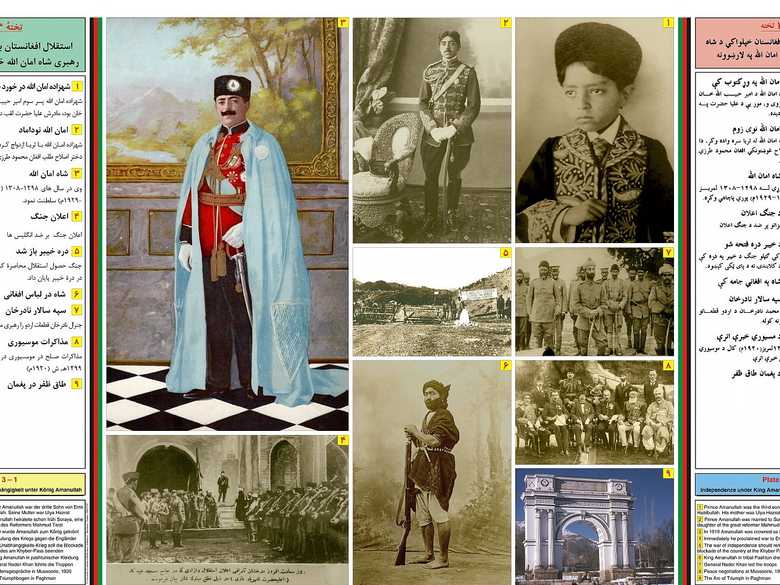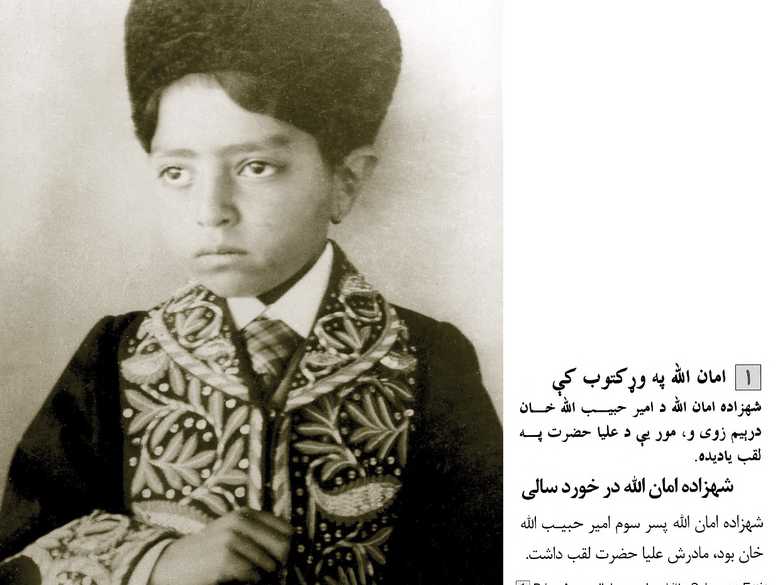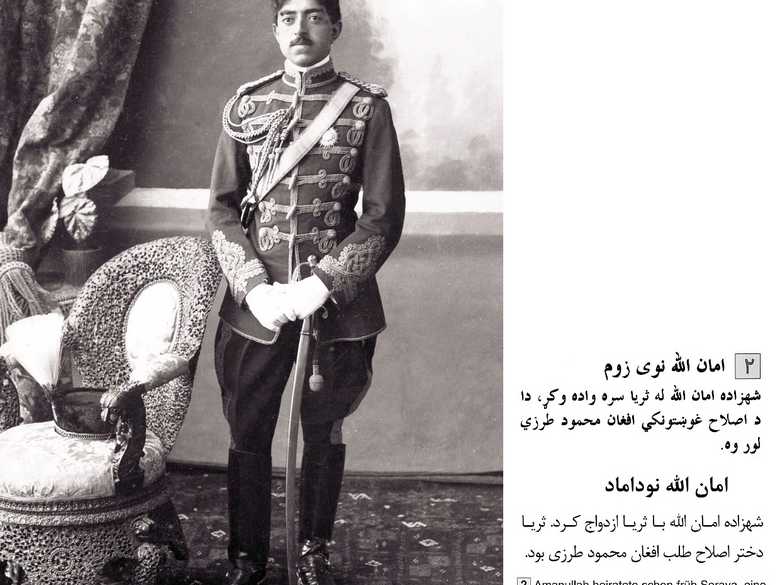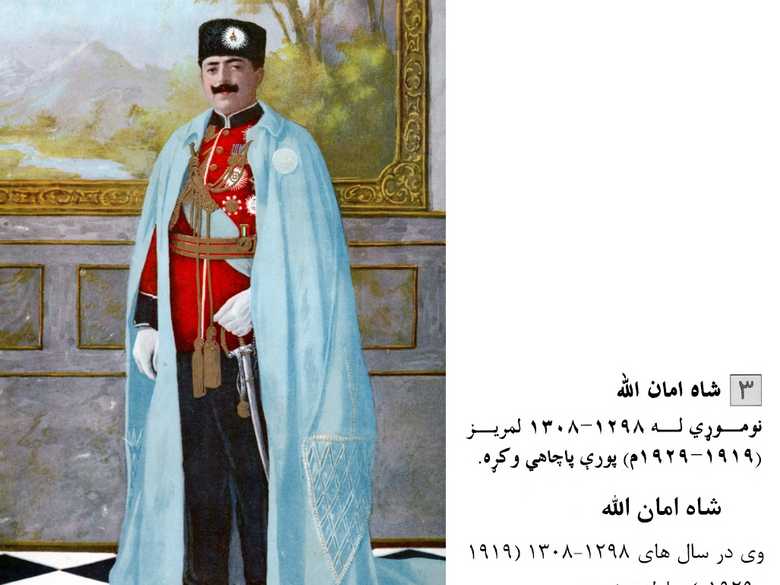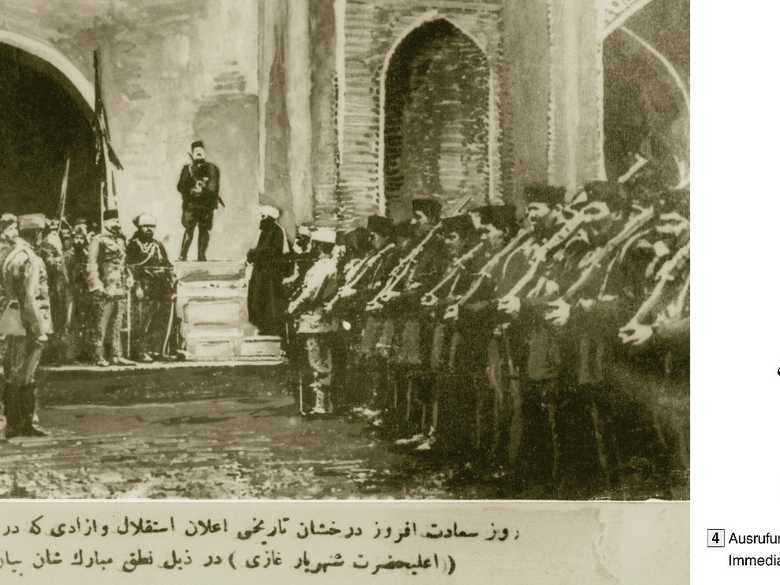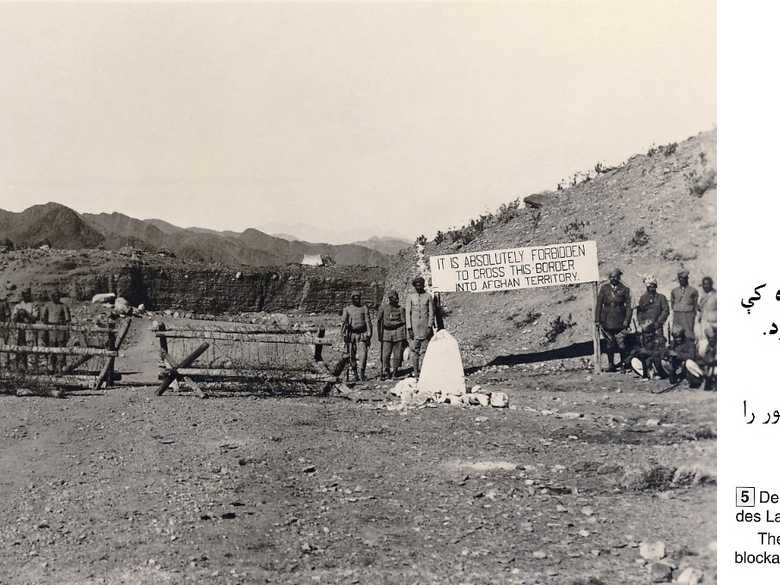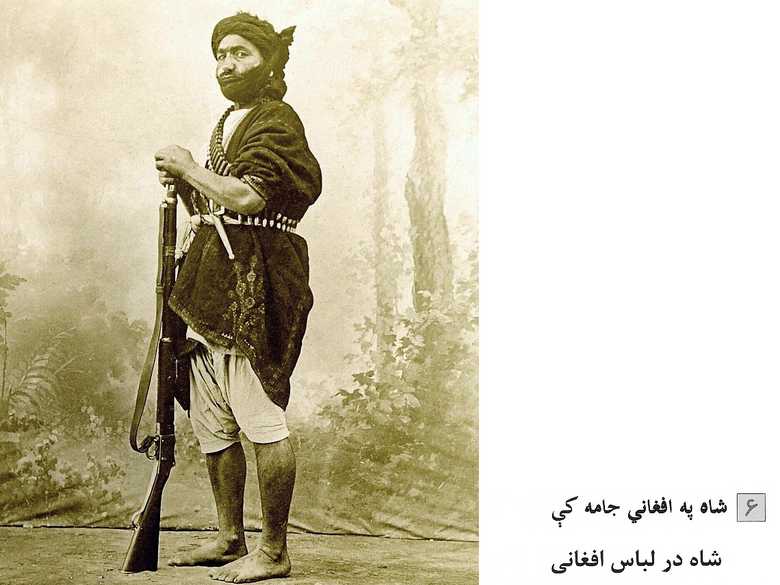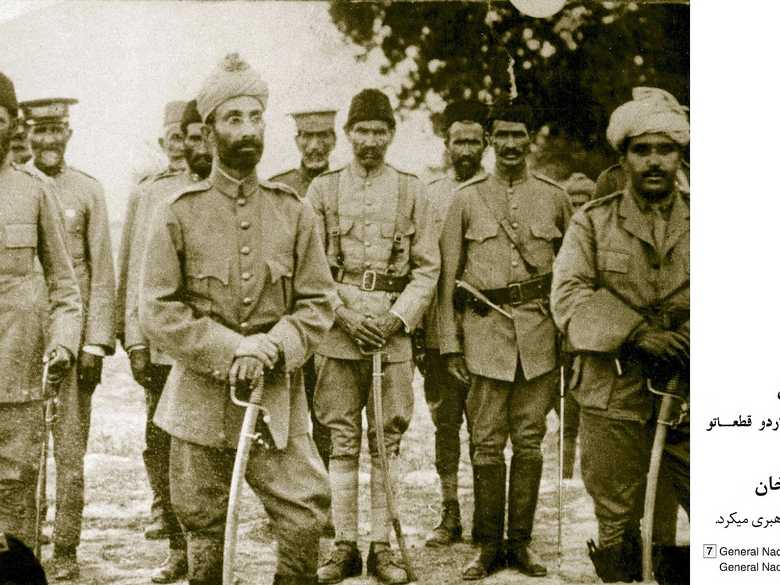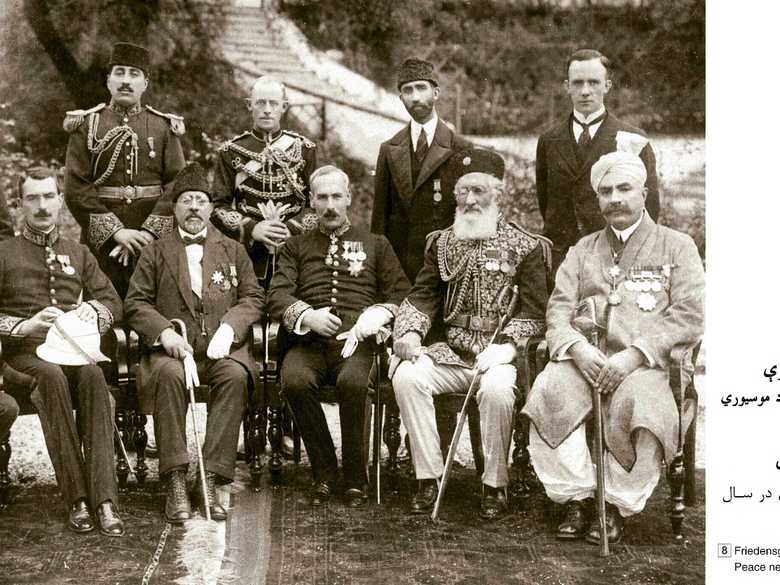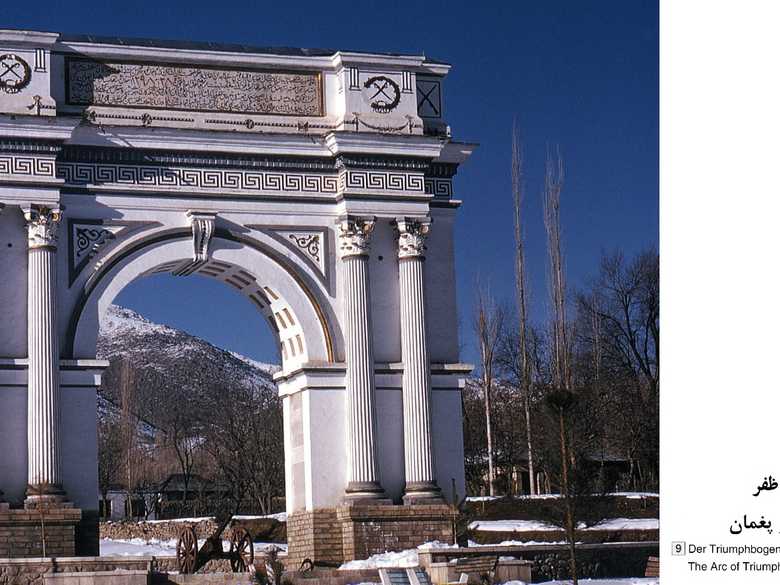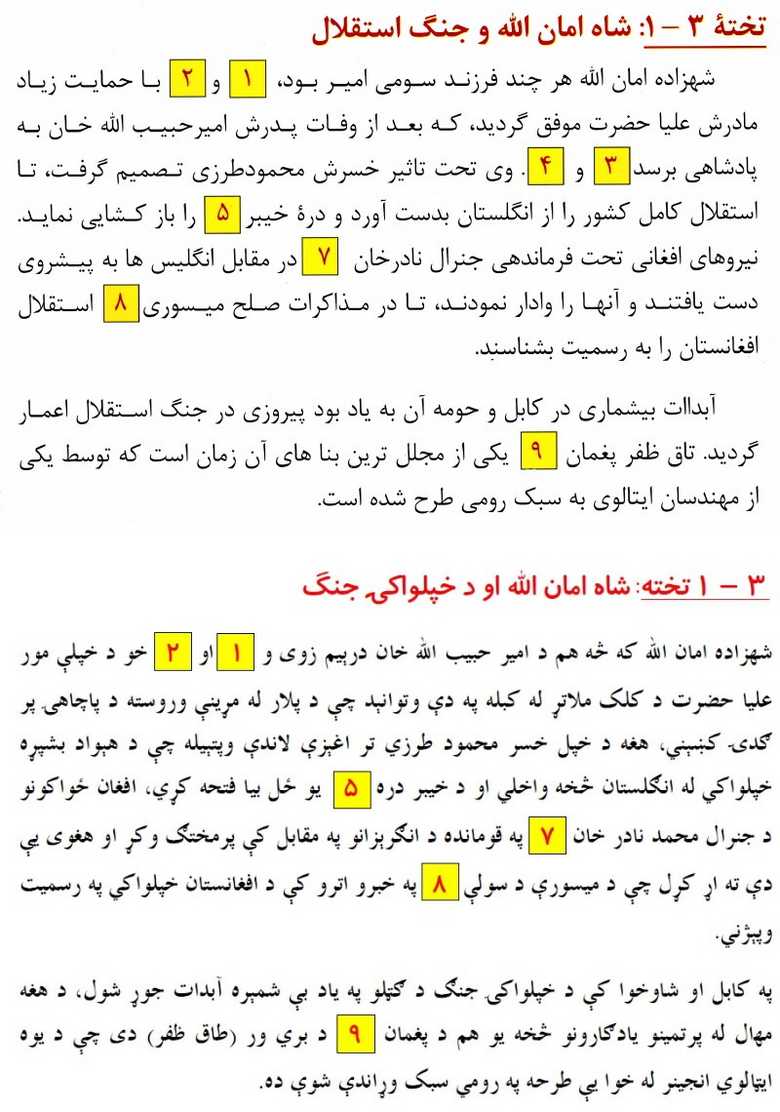TdW 3-01 — 1919: Unabhängigkeit unter König Amanullah
Tafel 3–1: König Amanullah und der Freiheitskrieg Prinz Amanullah 1/2 - ١/٢ wurde von seiner Mutter Ulya Hazrat sehr gefördert und es gelang ihm, nach dem Tod seines Vaters Emir Habibullah, den Thron zu besteigen, obwohl er nur der 3. Sohn des Emirs war 3/4 - ۳/۴. Unter dem Einfluss seines Schwiegervaters Mahmud Tarzi setzte er sich zum Ziel, die vollständige Unabhängigkeit von England zu erreichen und den Khaiber-Pass zu öffnen 5 - ٥. Unter Führung von General Nader Khan 7 - ٧ traten afghanisc...
Tafel 3–1: König Amanullah und der Freiheitskrieg
Prinz Amanullah 1/2 - ١/٢ wurde von seiner Mutter Ulya Hazrat sehr gefördert und es gelang ihm, nach dem Tod seines Vaters Emir Habibullah, den Thron zu besteigen, obwohl er nur der 3. Sohn des Emirs war 3/4 - ۳/۴. Unter dem Einfluss seines Schwiegervaters Mahmud Tarzi setzte er sich zum Ziel, die vollständige Unabhängigkeit von England zu erreichen und den Khaiber-Pass zu öffnen 5 - ٥. Unter Führung von General Nader Khan 7 - ٧ traten afghanische Truppen gegen die Engländer an und erzwangen in den Friedensverhandlungen in Mussoorie 8 - ٨ die Anerkennung der afghanischen Unabhängigkeit. Mehrere Monumente wurden in und um Kabul zur Erinnerung an diesen Sieg errichtet. Das Eindrücklichste ist der Triumphbogen in Paghman 9 - ٩, der durch einen italienischen Architekten in Anlehnung an römische Vorbilder entworfen wurde. Tableau 3–1 : Le roi Amanullah et la guerre d’indépendance
Le prince Amanullah 1/2, encouragé par sa mère Ulya Hazrat, accède au trône à la mort de son père l’émir Habibullah, alors qu’il n’est que son 3e fils 3/4. Sous l’influence de son beau-père Mahmud Tarzi, il se fixe pour objectif d’affranchir entièrement le pays de la tutelle anglaise et d’ouvrir la passe de Khaïber 5. Les troupes afghanes, conduites par le général Nader Khan 7, s’opposent aux Anglais et contraignent ces derniers à la signature, à Mussoorie 8, d’un traité de paix reconnaissant l’indépendance de l’Afghanistan. Plusieurs monuments célèbrent cette victoire à Kaboul et aux alentours, le plus impressionnant d’entre eux étant l’arc de triomphe de Paghman 9. Conçu par un architecte italien, il est inspiré de la Rome antique. Plate 3–1: King Amanullah and the War of Independence
Prince Amanullah 1/2 – ١/٢ was pushed considerably by his mother, Ulya Hazrat, and was successful in acceding to the throne after the death of his father, Emir Habibullah, even though he was only the third son 3/4 – ۳/۴. Under the influence of his father-in-law, Mahmud Tarzi, he set himself the goal of achieving full independence from Britain and opening the Khyber Pass 5 – ٥. Under the leadership of General Nader Khan 7 – ٧, Afghan troops engaged the British and forced the recognition of Afghan independence in peace negotiations in Mussoorie 8 – ٨. A number of monuments were erected in and around Kabul to commemorate this victory. The most impressive is the triumphal arch at Paghman 9 – ٩, which was designed by an Italian architect and draws on old Roman styles.
Prinz Amanullah 1/2 - ١/٢ wurde von seiner Mutter Ulya Hazrat sehr gefördert und es gelang ihm, nach dem Tod seines Vaters Emir Habibullah, den Thron zu besteigen, obwohl er nur der 3. Sohn des Emirs war 3/4 - ۳/۴. Unter dem Einfluss seines Schwiegervaters Mahmud Tarzi setzte er sich zum Ziel, die vollständige Unabhängigkeit von England zu erreichen und den Khaiber-Pass zu öffnen 5 - ٥. Unter Führung von General Nader Khan 7 - ٧ traten afghanische Truppen gegen die Engländer an und erzwangen in den Friedensverhandlungen in Mussoorie 8 - ٨ die Anerkennung der afghanischen Unabhängigkeit. Mehrere Monumente wurden in und um Kabul zur Erinnerung an diesen Sieg errichtet. Das Eindrücklichste ist der Triumphbogen in Paghman 9 - ٩, der durch einen italienischen Architekten in Anlehnung an römische Vorbilder entworfen wurde. Tableau 3–1 : Le roi Amanullah et la guerre d’indépendance
Le prince Amanullah 1/2, encouragé par sa mère Ulya Hazrat, accède au trône à la mort de son père l’émir Habibullah, alors qu’il n’est que son 3e fils 3/4. Sous l’influence de son beau-père Mahmud Tarzi, il se fixe pour objectif d’affranchir entièrement le pays de la tutelle anglaise et d’ouvrir la passe de Khaïber 5. Les troupes afghanes, conduites par le général Nader Khan 7, s’opposent aux Anglais et contraignent ces derniers à la signature, à Mussoorie 8, d’un traité de paix reconnaissant l’indépendance de l’Afghanistan. Plusieurs monuments célèbrent cette victoire à Kaboul et aux alentours, le plus impressionnant d’entre eux étant l’arc de triomphe de Paghman 9. Conçu par un architecte italien, il est inspiré de la Rome antique. Plate 3–1: King Amanullah and the War of Independence
Prince Amanullah 1/2 – ١/٢ was pushed considerably by his mother, Ulya Hazrat, and was successful in acceding to the throne after the death of his father, Emir Habibullah, even though he was only the third son 3/4 – ۳/۴. Under the influence of his father-in-law, Mahmud Tarzi, he set himself the goal of achieving full independence from Britain and opening the Khyber Pass 5 – ٥. Under the leadership of General Nader Khan 7 – ٧, Afghan troops engaged the British and forced the recognition of Afghan independence in peace negotiations in Mussoorie 8 – ٨. A number of monuments were erected in and around Kabul to commemorate this victory. The most impressive is the triumphal arch at Paghman 9 – ٩, which was designed by an Italian architect and draws on old Roman styles.
Image No.
TdW 3-01
Collection
Türme des Wissens / Towers of Knowledge 1747-1973
Series
Turm / Tower 3: Afghanistan 1919-1933
You know more about this picture?



